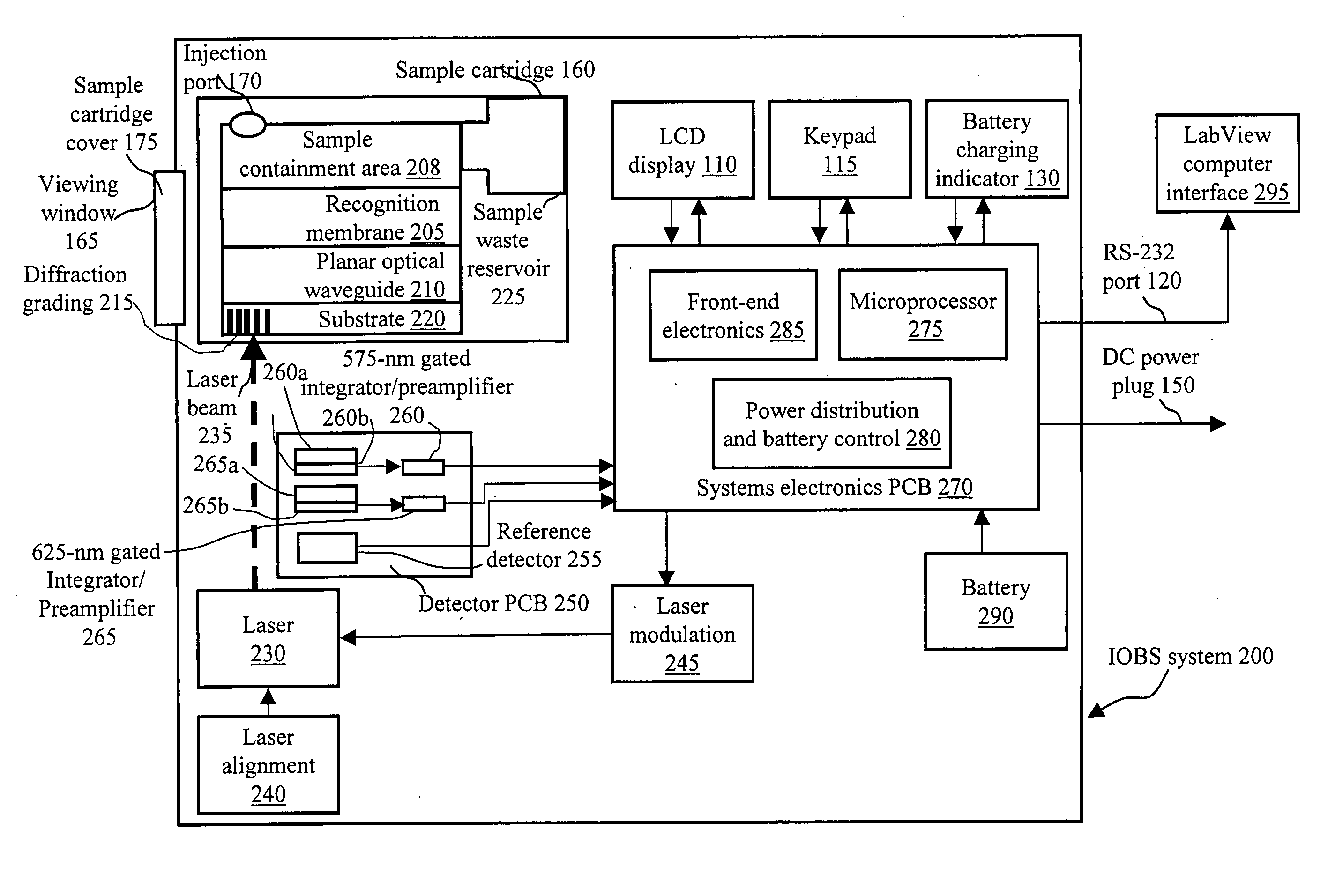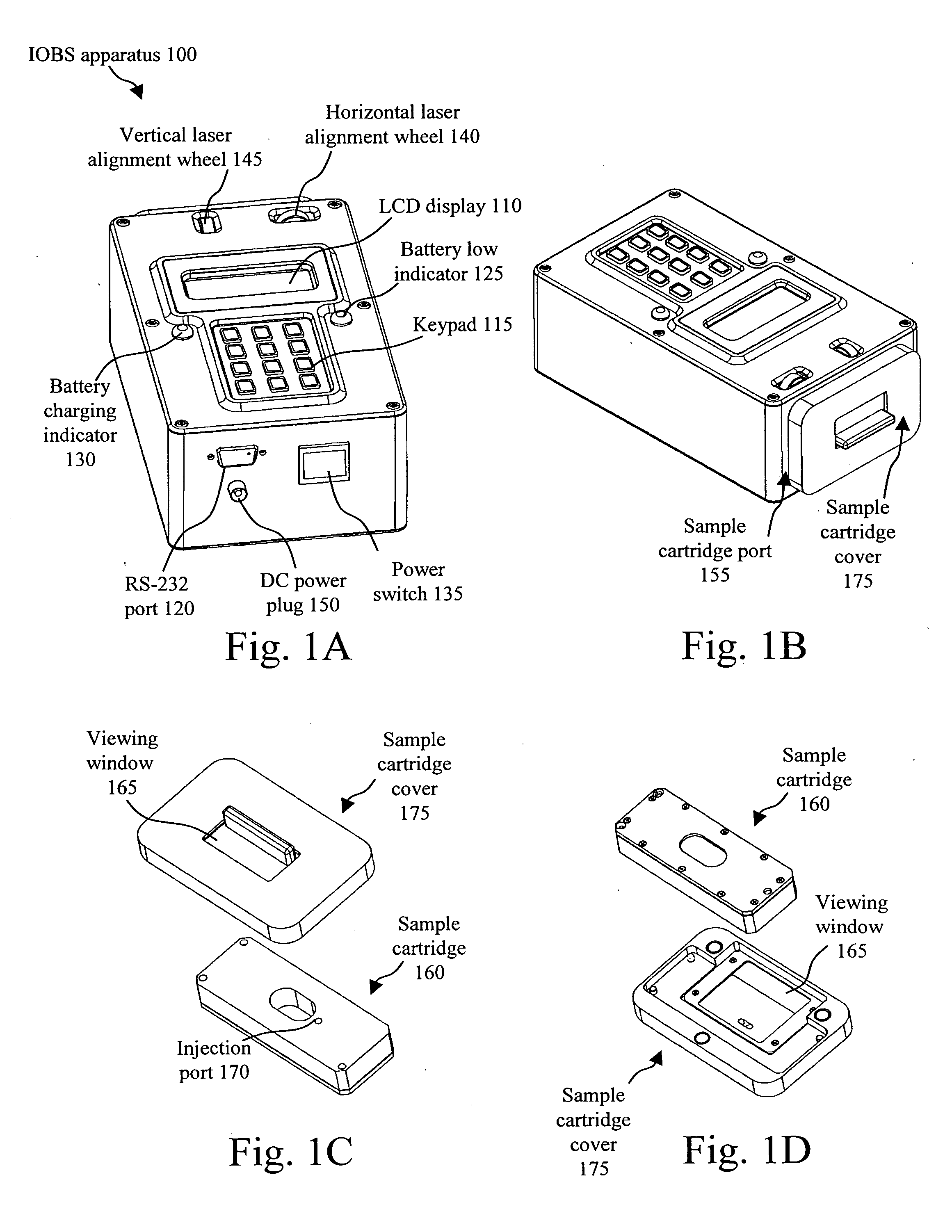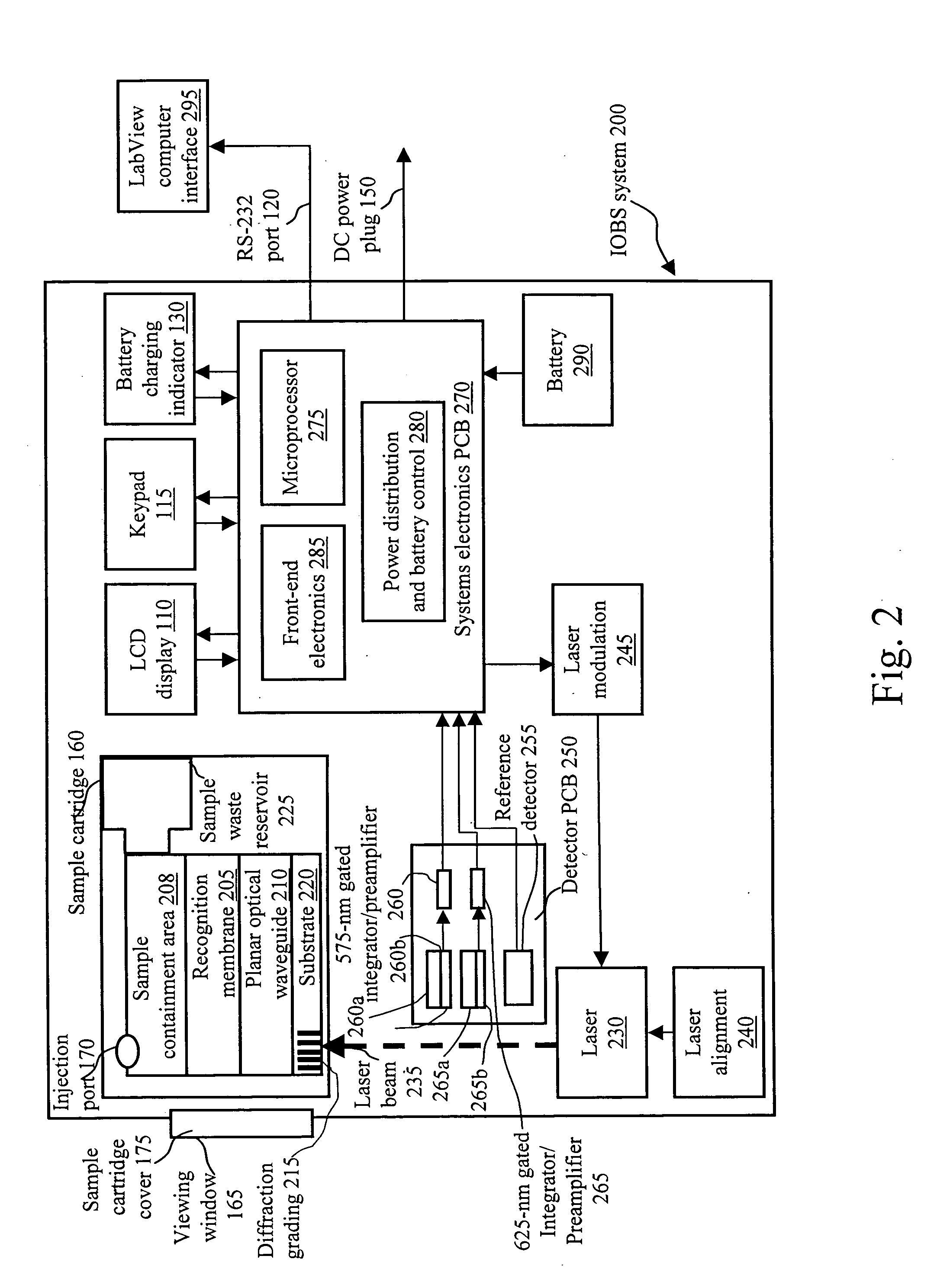Integrated optical biosensor system (IOBS)
a biosensor and optical technology, applied in the field of biosensors, can solve the problems of high false positive rate, difficult operation of the device itself, and high cost, and achieve the effects of reducing the cost of assays, and improving the accuracy of assays
- Summary
- Abstract
- Description
- Claims
- Application Information
AI Technical Summary
Problems solved by technology
Method used
Image
Examples
Embodiment Construction
[0023] The present invention provides an apparatus for optically detecting the presence of various biological materials using simple and inexpensive components that yields accurate results quickly and with relatively little human intervention. The invention is most easily understood through reference to the drawings.
[0024]FIG. 1A shows an isometric view of an integrated optical biosensor (IOBS) apparatus 100. IOBS apparatus 100 further includes an LCD display 110, a keypad 115, a serial RS-232 port 120 for communication with a PC (not shown), a battery low indicator 125, a battery charging indicator 130, a power switch 135, a horizontal laser alignment wheel 140, a vertical laser alignment wheel 145, and a DC power plug 150.
[0025]FIG. 1B shows a top view of IOBS apparatus 100 further including a sample cartridge port 155, covered by a sample cartridge cover 175.
[0026]FIG. 1C shows a top view of a sample cartridge 160, further including an injection port 170, sample cartridge cove...
PUM
| Property | Measurement | Unit |
|---|---|---|
| power | aaaaa | aaaaa |
| electrical | aaaaa | aaaaa |
| flexible length | aaaaa | aaaaa |
Abstract
Description
Claims
Application Information
 Login to View More
Login to View More - R&D
- Intellectual Property
- Life Sciences
- Materials
- Tech Scout
- Unparalleled Data Quality
- Higher Quality Content
- 60% Fewer Hallucinations
Browse by: Latest US Patents, China's latest patents, Technical Efficacy Thesaurus, Application Domain, Technology Topic, Popular Technical Reports.
© 2025 PatSnap. All rights reserved.Legal|Privacy policy|Modern Slavery Act Transparency Statement|Sitemap|About US| Contact US: help@patsnap.com



